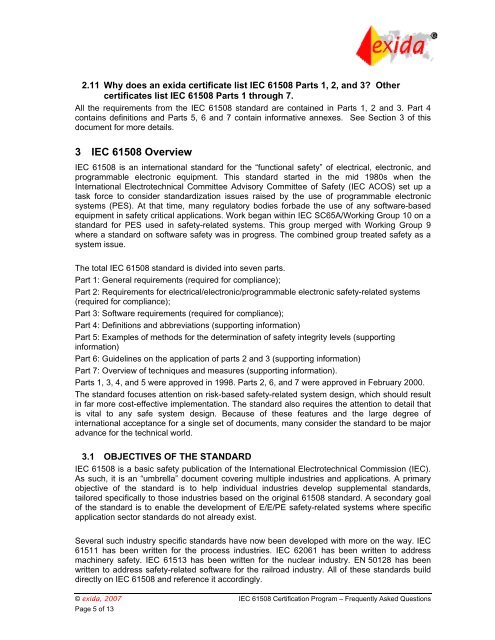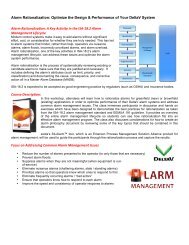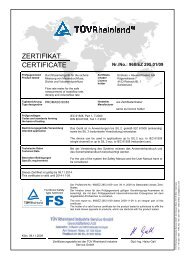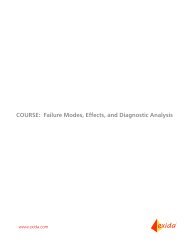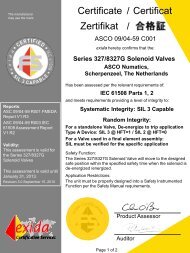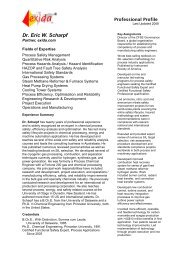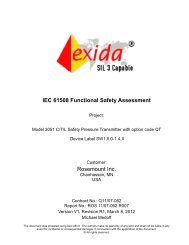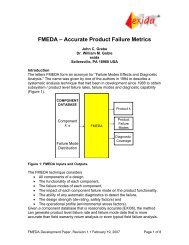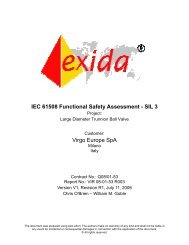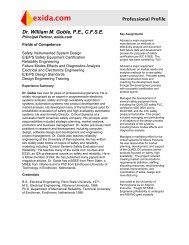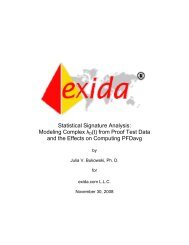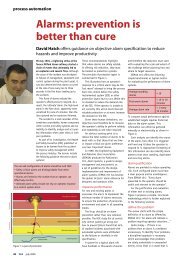Frequently Asked Questions - Exida
Frequently Asked Questions - Exida
Frequently Asked Questions - Exida
You also want an ePaper? Increase the reach of your titles
YUMPU automatically turns print PDFs into web optimized ePapers that Google loves.
2.11 Why does an exida certificate list IEC 61508 Parts 1, 2, and 3? Othercertificates list IEC 61508 Parts 1 through 7.All the requirements from the IEC 61508 standard are contained in Parts 1, 2 and 3. Part 4contains definitions and Parts 5, 6 and 7 contain informative annexes. See Section 3 of thisdocument for more details.3 IEC 61508 OverviewIEC 61508 is an international standard for the “functional safety” of electrical, electronic, andprogrammable electronic equipment. This standard started in the mid 1980s when theInternational Electrotechnical Committee Advisory Committee of Safety (IEC ACOS) set up atask force to consider standardization issues raised by the use of programmable electronicsystems (PES). At that time, many regulatory bodies forbade the use of any software-basedequipment in safety critical applications. Work began within IEC SC65A/Working Group 10 on astandard for PES used in safety-related systems. This group merged with Working Group 9where a standard on software safety was in progress. The combined group treated safety as asystem issue.The total IEC 61508 standard is divided into seven parts.Part 1: General requirements (required for compliance);Part 2: Requirements for electrical/electronic/programmable electronic safety-related systems(required for compliance);Part 3: Software requirements (required for compliance);Part 4: Definitions and abbreviations (supporting information)Part 5: Examples of methods for the determination of safety integrity levels (supportinginformation)Part 6: Guidelines on the application of parts 2 and 3 (supporting information)Part 7: Overview of techniques and measures (supporting information).Parts 1, 3, 4, and 5 were approved in 1998. Parts 2, 6, and 7 were approved in February 2000.The standard focuses attention on risk-based safety-related system design, which should resultin far more cost-effective implementation. The standard also requires the attention to detail thatis vital to any safe system design. Because of these features and the large degree ofinternational acceptance for a single set of documents, many consider the standard to be majoradvance for the technical world.3.1 OBJECTIVES OF THE STANDARDIEC 61508 is a basic safety publication of the International Electrotechnical Commission (IEC).As such, it is an “umbrella” document covering multiple industries and applications. A primaryobjective of the standard is to help individual industries develop supplemental standards,tailored specifically to those industries based on the original 61508 standard. A secondary goalof the standard is to enable the development of E/E/PE safety-related systems where specificapplication sector standards do not already exist.Several such industry specific standards have now been developed with more on the way. IEC61511 has been written for the process industries. IEC 62061 has been written to addressmachinery safety. IEC 61513 has been written for the nuclear industry. EN 50128 has beenwritten to address safety-related software for the railroad industry. All of these standards builddirectly on IEC 61508 and reference it accordingly.© exida, 2007 IEC 61508 Certification Program – <strong>Frequently</strong> <strong>Asked</strong> <strong>Questions</strong>Page 5 of 13


